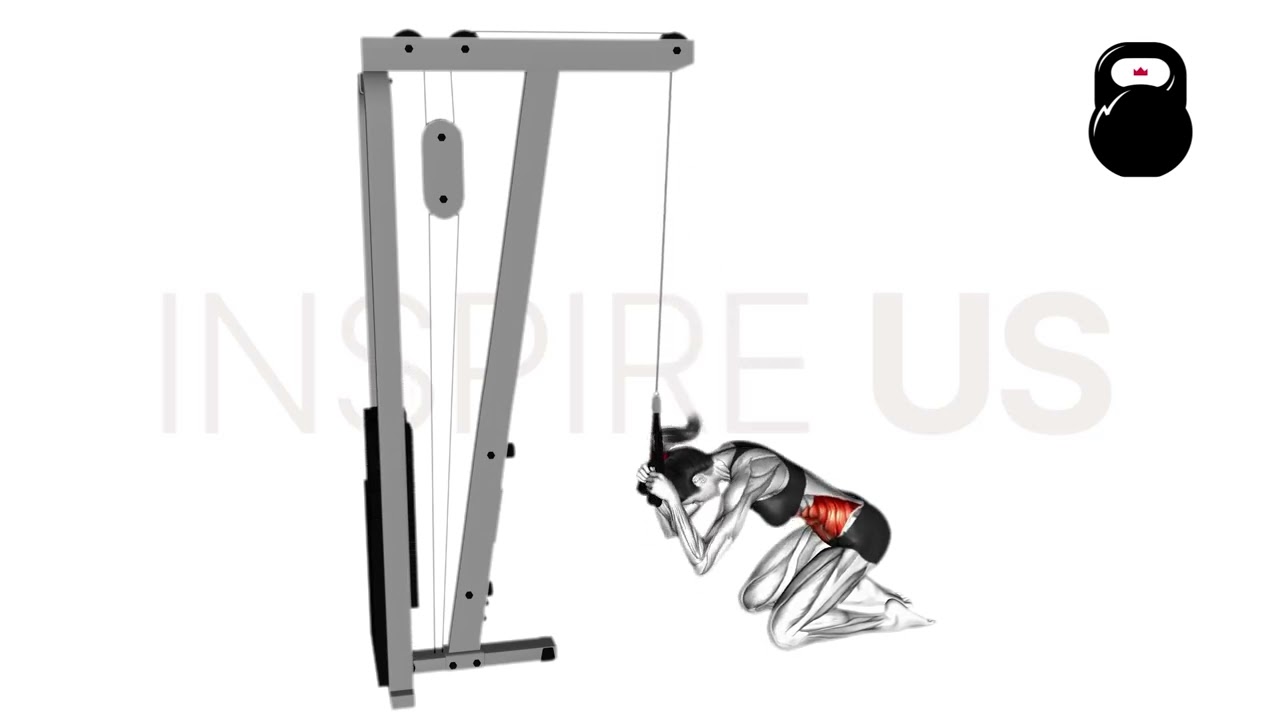Cable Knee Crunch: Benefits, Muscles Worked, and More
The cable knee crunch is a machine-based isolation exercise most often performed so as to build strength, stability and supposed definition in the abdominal muscles.
It involves the lifter kneeling beneath a cable pulley and bending the torso towards the floor as they drag the cable handle alongside their upper body.
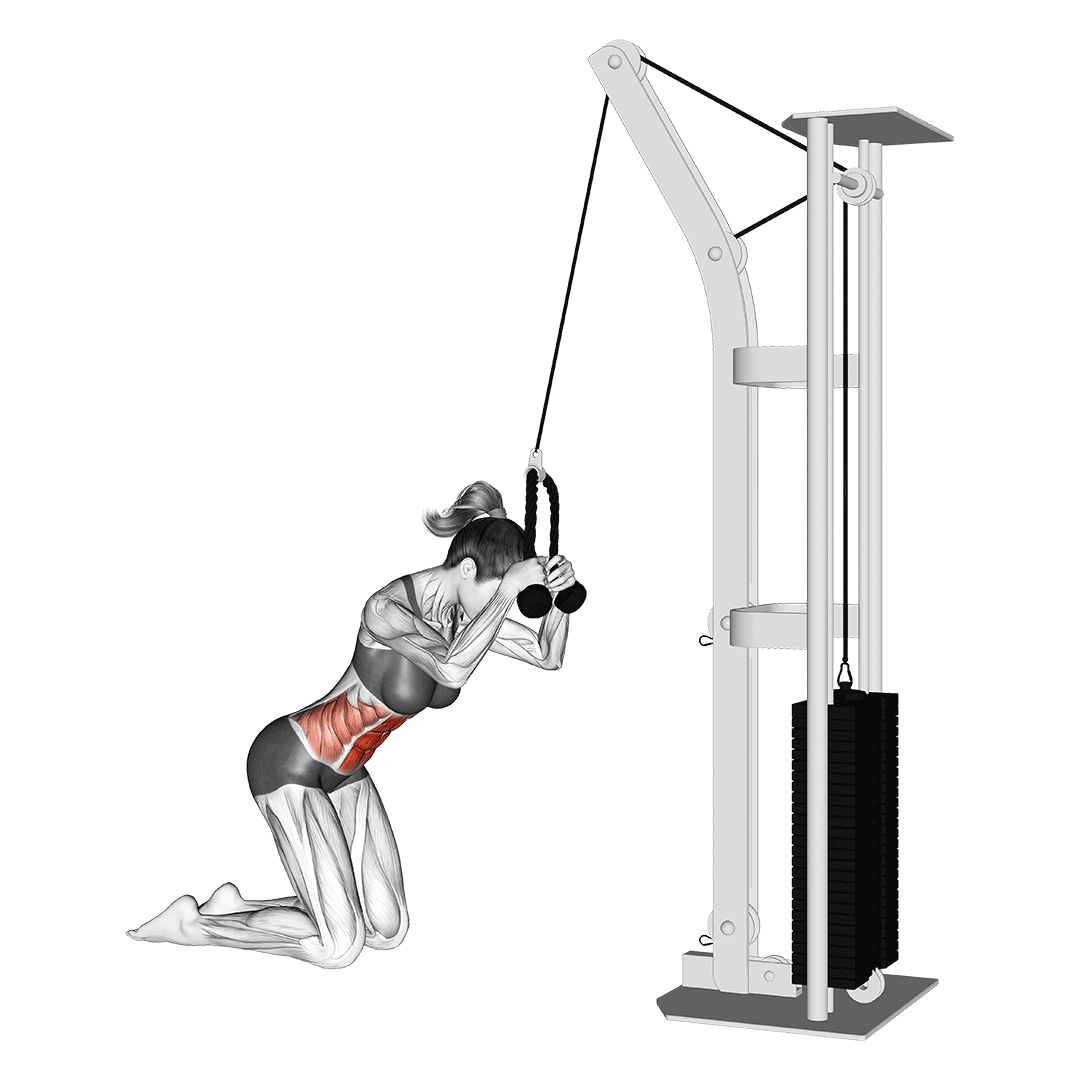
The cable knee crunch is frequently programmed around the end of a workout session in the role of an accessory movement. This is primarily due to its isolated nature, targeting no other musculature outside of the core itself.
The cable knee crunch is also otherwise known as a cable kneeling crunch - or simply cable crunches.
How to do a Cable Knee Crunch
To perform a repetition of the cable knee crunch, the lifter will first set the cable pulley to approximately head level, selecting a double ended rope attachment or similar handle.
Gripping this handle in both hands, the lifter then kneels down with the handle held parallel to the upper back.
The spine should remain neutral and the hips stationary throughout the entire set, with most of the contraction being derived from the abdominal muscles alone.
Once kneeling with the handles gripped close to the body, the lifter then contracts their core and pulls their sternum towards the floor, being careful not to curve the back or move any part of the body below the waist.
Once reaching the limit of their range of motion, the lifter then slowly releases their core contraction and allows the resistance of the cable to pull them back into a relatively upright position - thereby completing the repetition.
What Muscles are Worked by Cable Knee Crunches?
Cable knee crunches are an isolation exercise, meaning they only really target a single muscle group throughout its movement pattern.
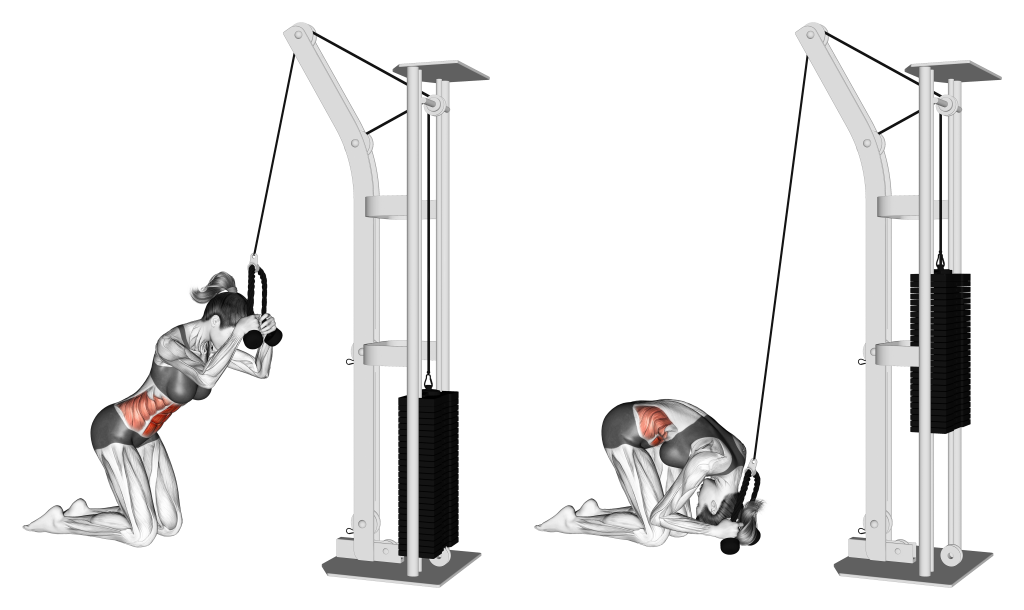
These are namely the abdominal muscles, including the transverse abdominis and rectus abdominis. Of course, the obliques (both internal and external) are also targeted, as well as the spinal erector muscles.
Because the resistance is angled from above and the lifter is actively bending forwards at the waist and hips, the upper section of the abdominal muscles is targeted to the greatest degree.
What are the Benefits of Doing Cable Knee Crunches?
Cable knee crunches are performed in order to achieve the following benefits.
Excellent for Abdominal Strengthening and Stability
Although the jury is out on whether the abdominal muscles can visibly hypertrophy, there is no doubting that directly training them will improve both the amount of force they exert when dynamically contracted - as well as their capacity to isometrically contract or “stabilize” the rest of the body.
In order to ensure that cable knee crunches truly develop the core muscles in this manner, complete a full range of motion with each repetition, keeping the emphasis on time under tension and proper abdominal contraction.
Stronger and more stable core muscles equates to a lesser risk of injury in the future, the capacity to maintain proper form during heavy exercises like the deadlift and a more functionally fit body as a whole.
Reinforces Spinal Neutrality
Cable knee crunches reinforce proper spinal neutrality through two methods; strengthening the core muscles and actively teaching the lifter how to keep a neutral spine despite intra-abdominal pressure and resistance actively pulling them in the opposite direction.
Stronger core musculature both protect and help mobilize the spine - especially the lumbar and thoracic sections which are immediately surrounded by these muscles. The obliques, abdominals and spinal erectors protect the spine, stabilize it and help diffuse pressure caused by weight or poor posture.
As such, lifters who regularly train their abs (and learn how to consciously keep spinal neutrality) will find that they are at far lesser risk of spinal injuries from poor form in other exercises.
Lower Impact Than Other Abdominal Exercises
The sit-up is a classic abdominal movement that is considered quite mechanically similar to the cable knee crunch, albeit without a cable machine and in a somewhat different stance.
Sit-ups have earned a bit of a reputation in recent years for straining the lower back and its ensuing spinal structures - something that is not at all a risk with the cable knee crunch, so long as proper form is followed.
If sit-ups irritate your lower back, try switching to cable knee crunches as a safer and lower impact alternative.
Easily Adjustable and Accessible
As is the case with many other cable machine exercises, the cable knee crunch can easily be adjusted to adopt a different angle of resistance, make use of a different handle or even to modify the movement itself.
If the angle of resistance is dragging the cable against your neck, simply adjust the pulley so it is angled slightly away from the body. Likewise, if your knees are uncomfortable, it is possible to place a mat beneath your legs.
The movement can even be performed standing so long as the pulley is set at the correct height. This is otherwise known as a standing cable crunch.
Constant Time Under Tension
Other core exercises like the decline crunch or hanging leg raise tend to release tension in the core during certain parts of their movement pattern. This reduces the intensity of the isometric contraction involved, and can make them comparatively less effective at developing the core muscles to a certain extent.
Fortunately, the resistance of the cable machine is constant and as such will not allow the core to relax unless the lifter stands back up - maximizing the time under tension and the intensity of isometric contraction that the core muscles undergo.
Common Cable Knee Crunch Mistakes
While there is no doubt that cable knee crunches are quite safe, avoid the following mistakes in order to make the most out of the exercise.
Extending the Hips
Although the hips should indeed be elevated over the shins, avoid extending them or aligning them parallel to the knees. This will create greater strain along the back as the lifter will adopt a more dramatic curve in order to bend the torso forwards.
Extended or not, aim to keep the hips as stationary as possible throughout the entire set. Moving the hips is a sign that too much resistance is being used, or that you should adopt a wider leg position for greater balance.
Aim to keep the hips over the calf muscles, with a more gradual angle starting from the top of the pelvis to the mid-back at the start of the repetition.
Extending the Neck
Lifters straining particularly hard may find themselves unconsciously extending their neck towards the floor as they curve the torso forwards. Doing so can strain the cervical section of the spine and pull the entire body out of proper alignment.
In order to avoid this, focus on keeping the head and neck parallel with the shoulders, tucking the chin slightly inwards if needed.
Squatting Back on the Heels
Much like how extending the hips too far forwards can be a mistake, so too can using too much flexion and essentially resting the hips backwards. In particularly severe cases, this can quite literally cause the glutes to rest atop the calves and heels.
This particular error in stance greatly shortens the range of motion involved, and will also strain the back as the lifter curves forwards.
Once again, aim to keep the hips over the calf muscles with only a gradual bend of the lower back present.
Pulling With the Arms
Remember that the cable knee crunch is an abdominal exercise. Feeling any sort of dynamic contraction in the muscles of the arms indicates that you may be targeting muscles other than those of the core - defeating the purpose of the movement.
If you continuously have difficulty not contracting the arms while performing cable knee crunches, try picking an alternative exercise like planks or hanging leg raises where the arms cannot be involved whatsoever.
Variations and Alternatives of the Cable Crunch
If the cable knee crunch isn’t hitting your abs how you would like, try the following alternative exercises out.
Cable Seated Crunches
The cable seated crunch is quite similar in mechanics to the cable kneeling crunch, only with the lifter facing away from the pulley atop a bench or box.
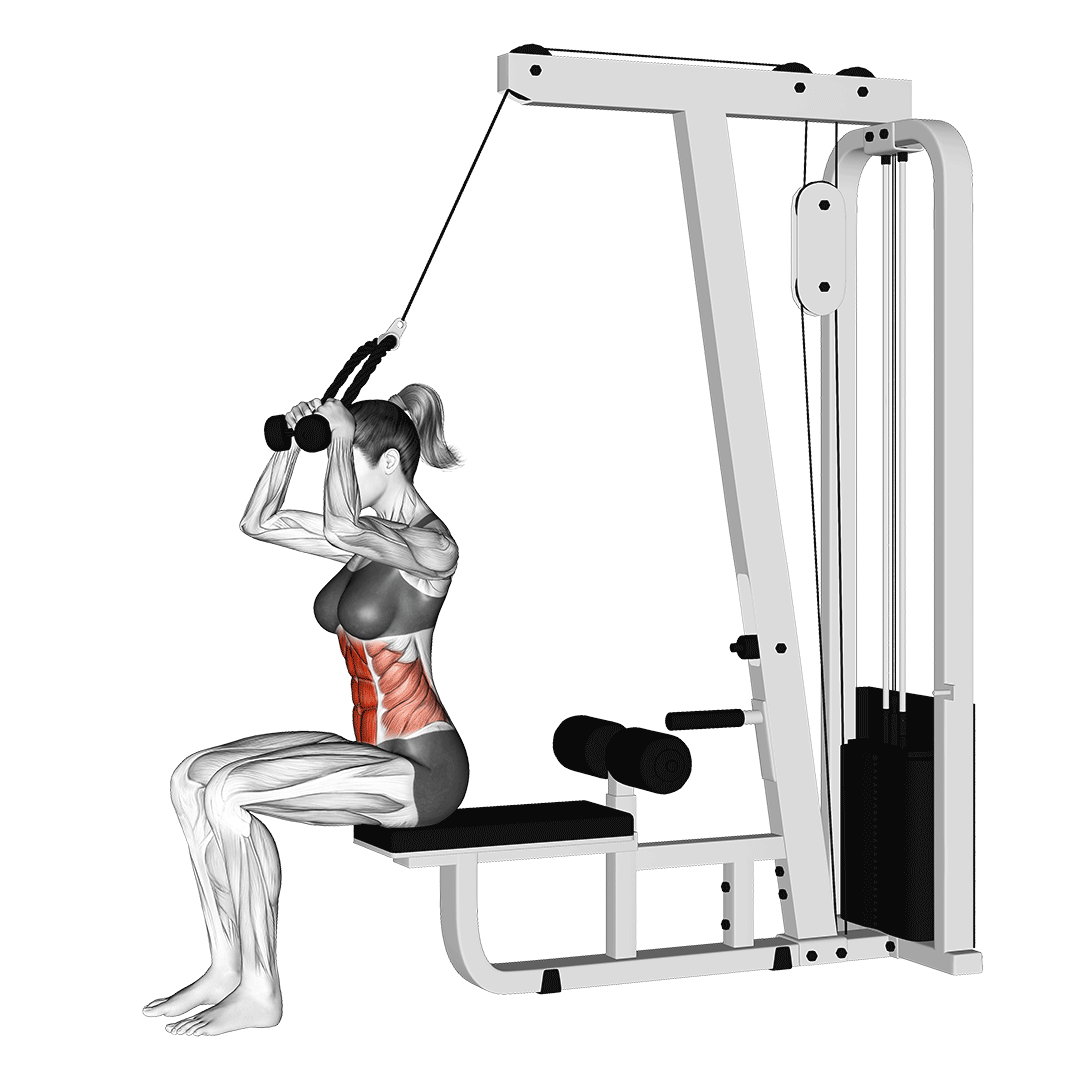
Seated cable crunches are more often preferred by lifters who find the kneeling variation to be uncomfortable - or those whose cable machines are fixed and as such provide the wrong angle of resistance when kneeling on the floor.
Otherwise, seated cable crunches are much the same mechanically and functionally as their kneeling counterpart.
Cable Standing Crunches
Mentioned briefly earlier in this article - standing cable crunches are a variation of cable crunch where the lifter faces the pulley and crunches while in a standing position, often featuring a small amount of hip flexion as they do so.
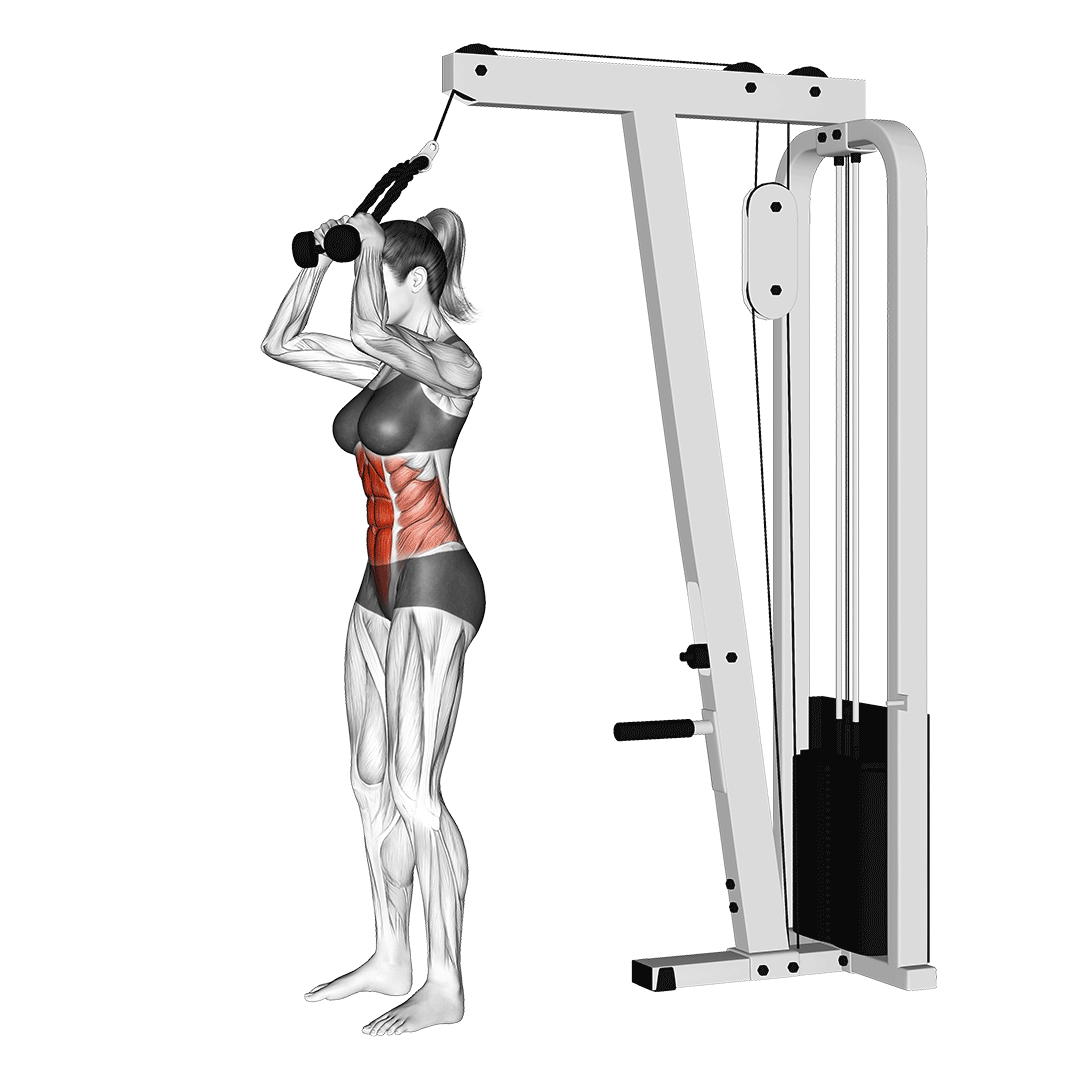
Standing cable crunches are somewhat controversial due to their greater risk of damaging the lower back, but are nonetheless a viable alternative to the kneeling variant for those that find it uncomfortable or difficult.
Cable Seated Cross Arm Twist
With a rather lengthy name, the cable cross arm twist is mechanically similar to a woodchopper but with only one arm gripping the handle and a more stationary lower body.
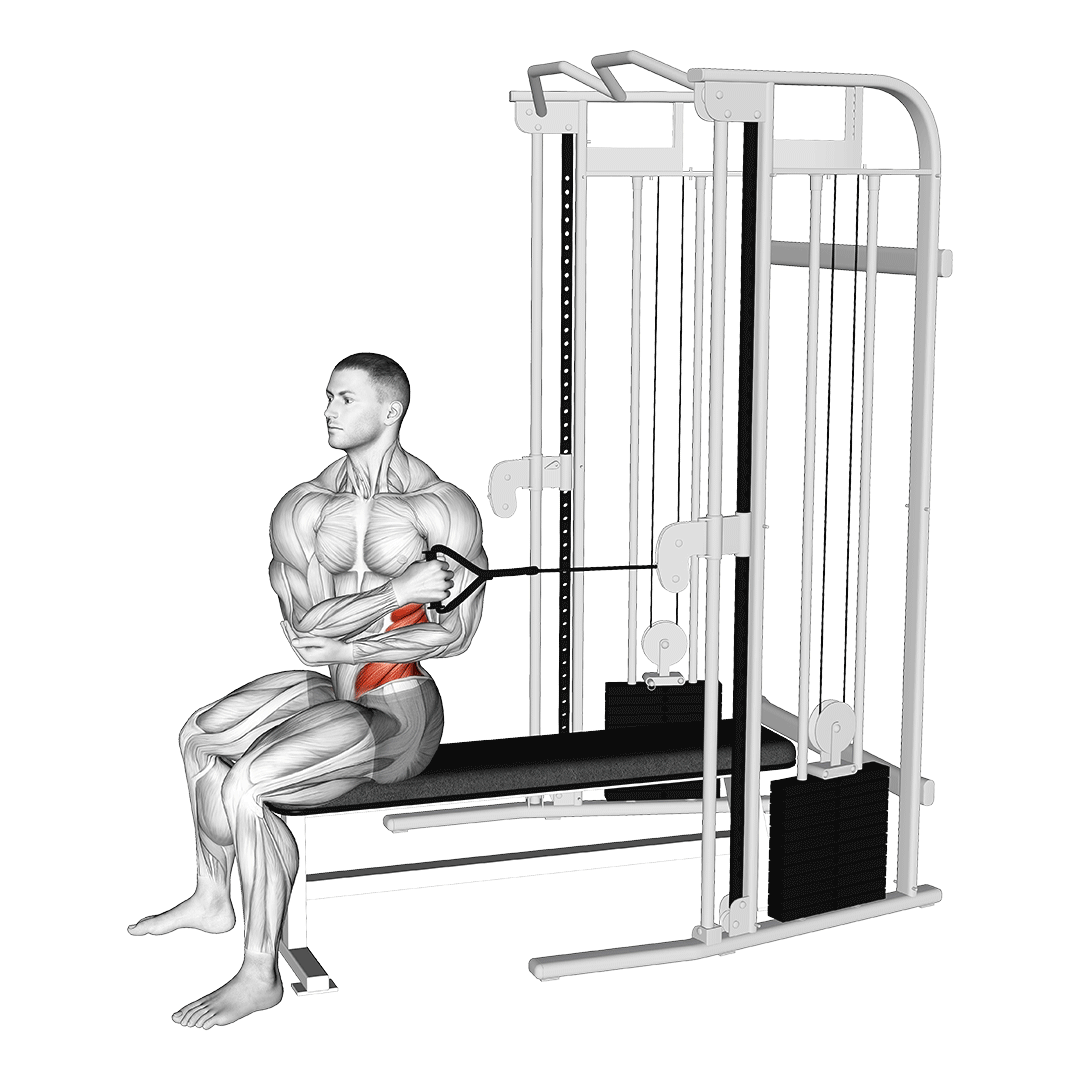
For greater emphasis on the obliques and a more transverse plane range of movement, this particular alternative can replace the kneeling cable crunch perfectly. Just remember to perform the movement in both directions, as it is unilateral in nature.
Frequently Asked Questions (FAQ)
Is the Kneeling Cable Crunch Effective?
Yes - the kneeling cable crunch is perfect for working the abs with a constant time under tension. For stronger and more stable core muscles, few exercises compare to it.
What Does the Kneeling Cable Crunch Do?
Kneeling cable crunches target the abdominal and oblique muscles in a simple and highly effective manner. This builds strength, stability and possibly greater muscular definition throughout the entire anterior core area.
Can I Do Cable Crunches Every Day?
As a general rule, avoid performing any exercise every single day. Even fast-recovering muscles like the abs can become injured or overtrained if no recovery time is allotted.
Aim to perform cable crunches up to 4 times a week, with at least one day of rest in between workout sessions targeting the abs.
References
1. Pierce, Kyle EdD, CSCS. Cable Crunch and Leg Pull-In. Strength and Conditioning 19(6):p 18-19, December 1997.
2. Lin, J.. (2016). Potential risks of sit-up exercise to low back pain. 35. 31-38. 10.6288/TJPH201635104050.
3. Oliva-Lozano JM, Muyor JM. Core Muscle Activity During Physical Fitness Exercises: A Systematic Review. Int J Environ Res Public Health. 2020 Jun 16;17(12):4306. doi: 10.3390/ijerph17124306. PMID: 32560185; PMCID: PMC7345922.

